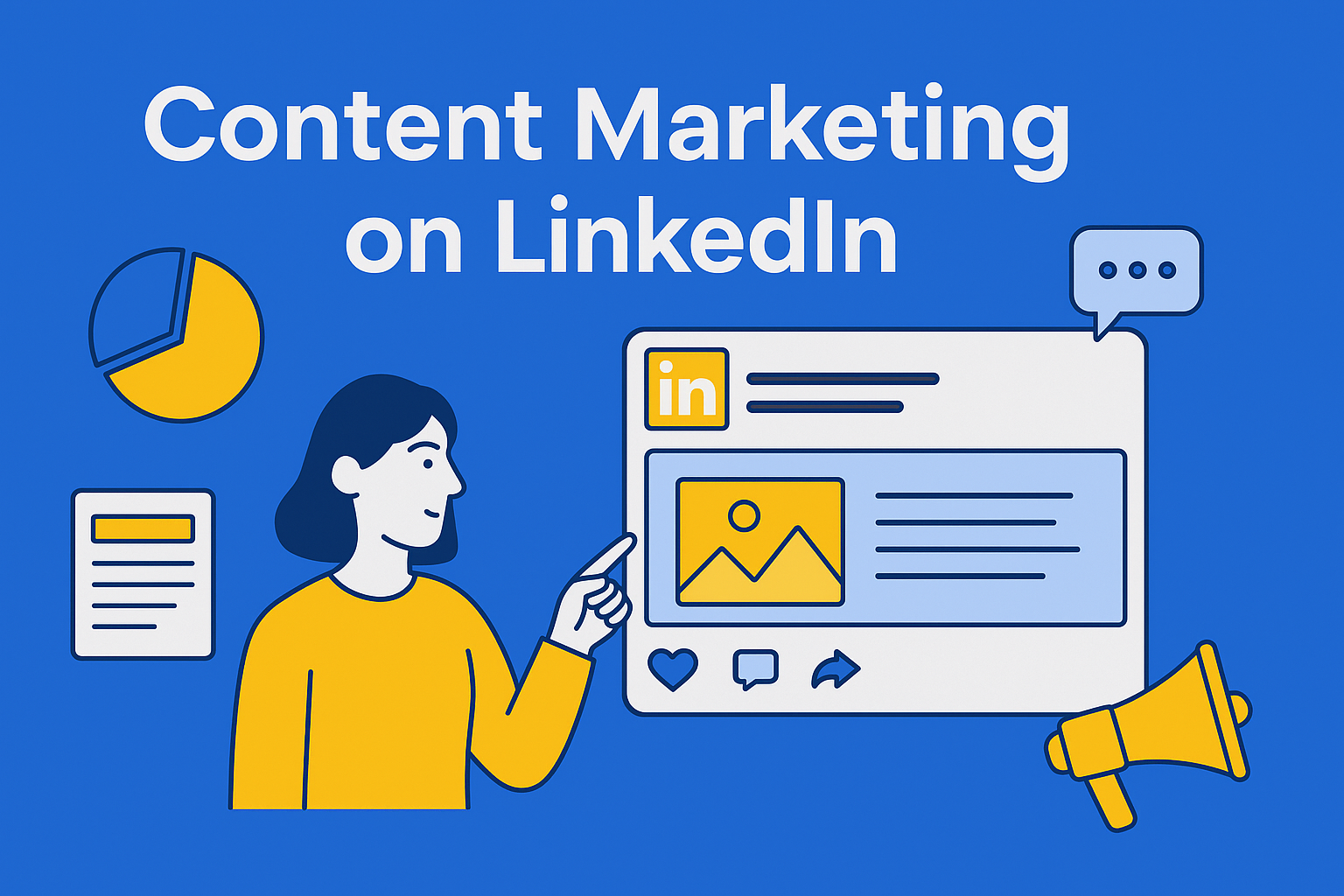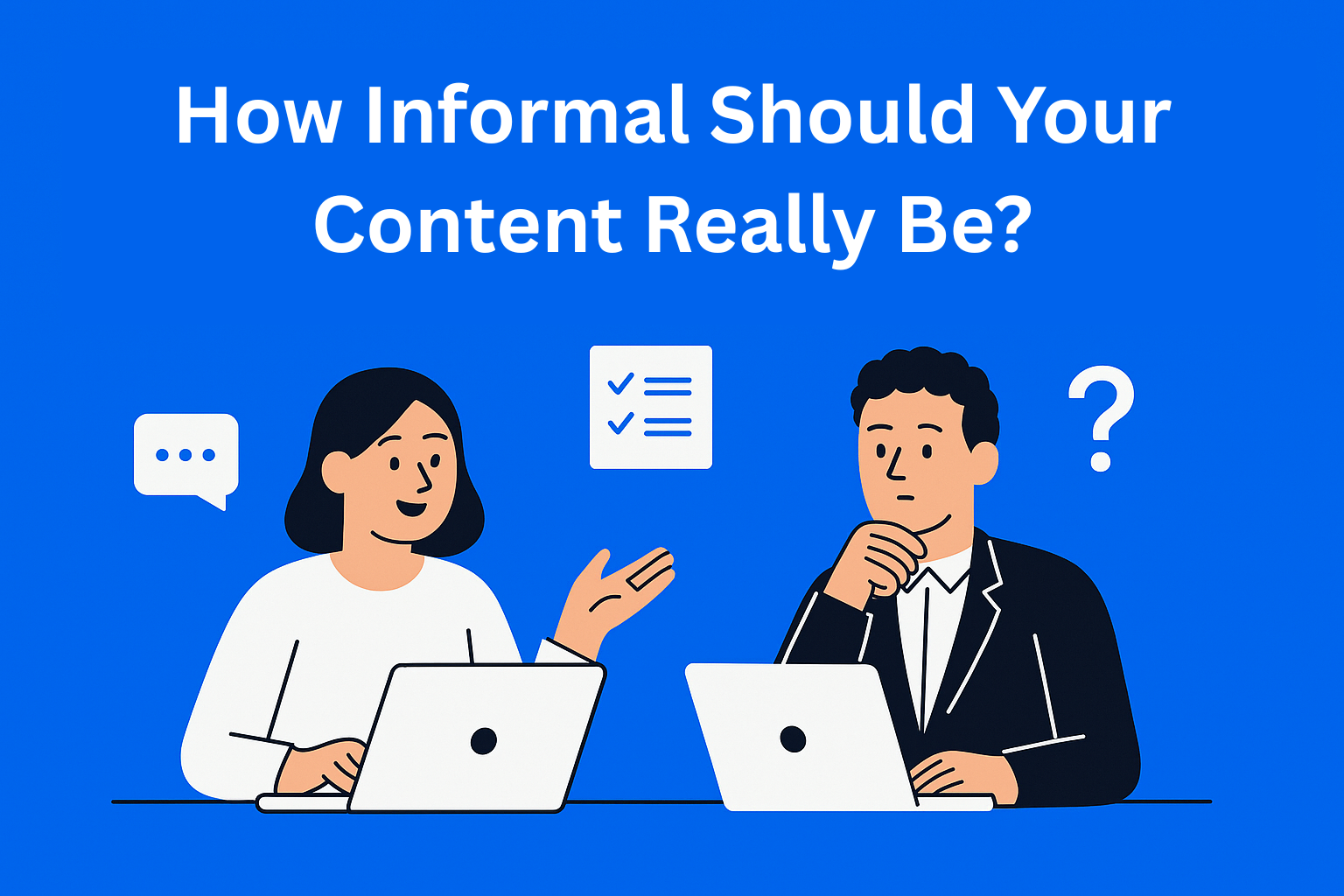Content Marketing on LinkedIn: Strategies for B2B Blogs
Learn how to grow your B2B blog on LinkedIn with smart content strategies, SEO tips, audience targeting, and effective post distribution. Create posts that connect, engage, and convert decision-makers in your industry.

LinkedIn is currently the most important network for business communication, especially when it comes to the B2B sector. Blogs are a great way to show expertise and build trust in your brand. In this text, we'll share specific strategies that can help content teams get the most out of their B2B blogs on LinkedIn. The goal isn’t just to post a link, but to create content that truly helps people, drives them to take action, and builds a relationship with the audience.
Key Takeaways
- LinkedIn is a top B2B platform - With high decision-maker engagement, it's ideal for distributing blog content.
- Native content performs best - Avoid external links when possible; use carousels, articles, and videos on-platform.
- Start posts with a hook - The first line matters. It drives dwell time and algorithm favorability.
- Define your audience precisely - Use LinkedIn Insights, polls, and engagement data to refine your buyer persona.
- Use smart SEO inside LinkedIn - Add keywords early, tag relevant accounts, and use 3-5 hashtags per post.
- Distribute strategically - Post at peak times, encourage team shares, and leverage groups for added reach.
- Track what works - Focus on engagement rate, CTR, and conversions using LinkedIn Analytics and UTM tracking.
- Consistency beats virality - Valuable content, shared regularly, builds long-term trust and B2B relationships.
Why LinkedIn is Key for B2B Blogs
Over a billion people around the world use LinkedIn, but what’s especially important for B2B companies is that more than 65 million users have the power to make business decisions. That means your content can reach exactly the people who decide on buying services or forming partnerships.
Compared to other social networks, LinkedIn has proven to be a much more effective channel for gathering business contacts, with a visitor-to-lead conversion rate of 2.74% almost three times higher than X (0.69%) and Facebook (0.77%), which makes it 277% better at generating leads.
That’s why a good blog post here can be more than just text - it can influence sales, partnerships, and business growth. This makes LinkedIn an excellent platform for B2B content marketing.
Understanding the LinkedIn Algorithm
If you want more people to see your content on LinkedIn, it’s important to understand how their algorithm works. In short, it prioritizes posts that have lots of comments, likes, shares, and those people spend more time reading (known as dwell time).
So it’s useful to:
- Start the post with an interesting sentence that grabs attention (a "hook")
- Ask questions to get people involved in the conversation
- Reply to comments to keep the interaction going
Tools like EasyContent can help you plan content in advance, organize your posting schedule, and collaborate better as a team.
Defining Your Target Audience
Before you start writing a blog, it’s important to know who you’re writing it for. LinkedIn gives you lots of helpful info about people, what industry they’re in, their job titles, where they work, and the size of their companies.
If you create a clear profile of your ideal audience (known as a "buyer persona"), it’ll be easier to write content that really matters to them.
How to get to know your audience better?
- Check data in LinkedIn Audience Insights
- Post a poll directly on LinkedIn
- Analyze comments and reactions you’ve already received
The better you know who follows you, the easier it will be to create content that makes sense and ranks better on the platform.
Content Strategies for B2B Blogs on LinkedIn
LinkedIn prefers content that stays on its platform. This means posts that don’t immediately send people to external websites (a.k.a. native content) are more likely to be seen by more users.
Here are some types of content that perform especially well:
- Carousels: Images users can swipe through, great for sharing short blog tips
- LinkedIn Articles: Longer posts written directly on LinkedIn, ideal for more serious topics
- Video: Short clips where the blog author talks about key ideas from the post
- Infographics: Visual overviews that help explain complex info more easily
Even when you’re writing about serious or technical topics, try adding a story, people connect better with content that has a narrative behind it. EasyContent can help here too, by making it easier for multiple people to work on the same text, with options for multiple versions and reviews before publishing.
SEO Optimization for LinkedIn Content
To improve the ranking of your blog posts and make them more visible, use keywords in the first 2 - 3 lines of the description, add relevant hashtags (3 to 5 per post is optimal), and tag people or companies when appropriate.
Don’t forget that LinkedIn also works like a search engine. If someone types “Top 10 Content Marketing Tools,” your blog post should appear among the top results, which is possible with the right keyword usage and optimization.
Distribution and Promotion of Blog Posts
Many people think it’s enough just to post a blog link and that’s it, but it doesn’t really work like that. If you want your content to truly reach people, you need to share it smartly.
Here’s how you can do that:
- Post during workdays, especially Tuesday and Thursday mornings (between 9 and 11am)
- Ask your team members to share the blog too, with their personal comments, it boosts reach
- Join LinkedIn groups and share content there, but with a thoughtful intro or comment
EasyContent can help in these situations too, since it lets you easily create multiple versions of content that team members can share in their own way. This makes everything feel more natural and helps your message reach more people.
Tracking Performance and Optimization
If you don’t track performance, you don’t know what’s working. Focus on:
- Engagement rate (likes, comments, shares)
- Click-through rate (especially if you’re linking to an external blog)
- Conversion rate (are users taking the next step?)
Tools like LinkedIn Analytics, Google Analytics (with UTM parameters), and heatmap tools help you understand how your visitors behave. Try A/B testing - change up headlines, calls to action, and even content formats.
Conclusion and Recommendations
LinkedIn isn’t just a place to meet business people, it’s also a great space to share useful content and build trust. If you write B2B blogs, you need to know who’s reading, how LinkedIn chooses what to show, write clearly and with the right keywords, and plan when and how to share your posts.
Using a tool like EasyContent makes it easier to organize everything and collaborate with your team.
Finally, don’t chase virality. Instead, be consistent, share valuable insights, and join the conversation. That’s what really makes a difference in the long run.






